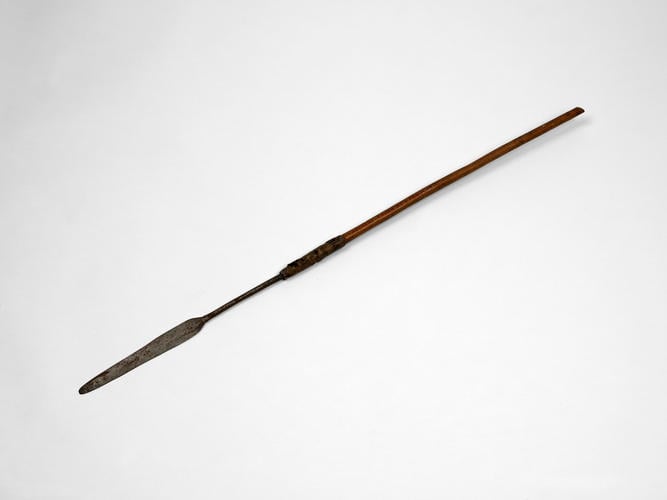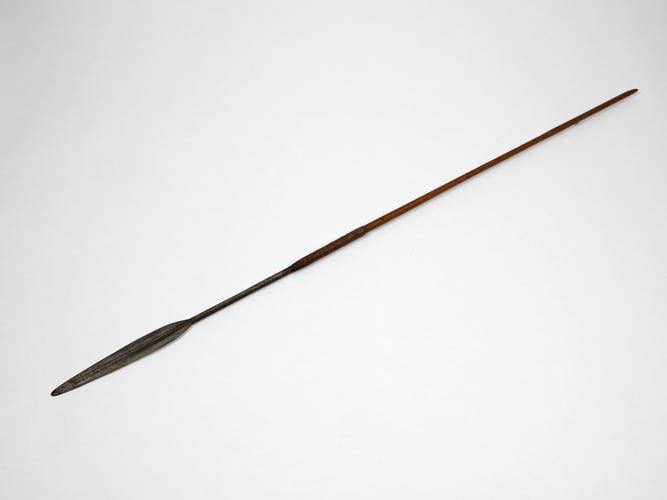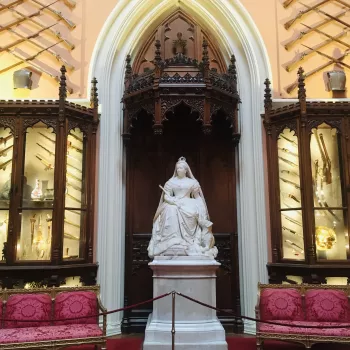-
Four spears or assegai, each with a wooden shaft joined to a shorter length of metal, which is beaten into the shape of a spear head at the end. The metal is joined to the wood by leather bindings. Each spear has been cut along the wooden shaft to reduce its length, probably for display in Britain.
Provenance
Taken by the 13th Light Infantry at the Battle of Kambula during the Anglo-Zulu War and presented to Queen Victoria, 1879. .4 has a painted inscription stating that it was taken from 'the chief'.
In 1879, British ambitions to create an imperial federation in southern Africa resulted in a series of armed conflicts with Cetshwayo, King of the Zulu, whose territory lay between Natal and the Transvaal. Cetshwayo refused to acquiesce to British demands or disband his army, mounting a sustained campaign of fierce resistance. The Battle of Kambula took place on 29 March 1879 when an entrenched British force, led by Colonel Evelyn Wood, repelled and then pursued some 20,000 Zulu who attacked in a formation known as the 'horn of the beast'. Although assegai of this kind were formidable weapons in the hands of trained warriors, they were overwhelmed in this instance by British firepower. Cetshwayo had been able to acquire only old-fashioned muskets and a few modern rifles ahead of the campaign.
On 2 January 1880, Queen Victoria recorded in her Journal that she 'Walked with Beatrice by Barton & the Swiss Cottage [at Osborne House on the Isle of Wight], where we placed, in the museum, some of the assegais & shields, given to me from Zululand.' All four spears are probably among the '8 Assegais' displayed 'Over the Arch' there (1904 Osborne House Swiss Cottage Inventory, p.97). The 1904 inventory description may be incorrect: an undated black and white photograph of the arch in the Museum shows a display of six (not eight) assegais with two Maori clubs. -
Creator(s)
(nationality)(nationality)Acquirer(s)
-
Medium and techniques
Wood, metal, leather
Category
Object type(s)
Place of Production
South Africa

Search results
Start typing
- Home
- /
- Collection
- /
- Explore the Collection
- /
- Spear
- /
Featured in
Keep in touch
Sign up to e-mail updates for the latest news, exclusive events and 15% off in our online shop.
We will look after your data in accordance with our Privacy Notice.
Quick Links
The income from your ticket contributes directly to The Royal Collection Trust, a registered charity. The aims of The Royal Collection Trust are the care and conservation of the Royal Collection, and the promotion of access and enjoyment through exhibitions, publications, loans and educational activities.












